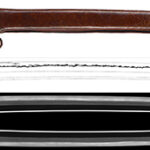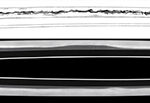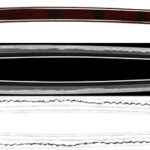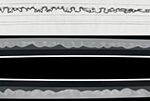Ordering number:AS24353
Katana in Shirasaya with Koshirae (NBTHK Tokubetsu Hozon Token) (NBTHK Koshu Tokubetsu Kicho Token) (Koshirae: NBTHK Tokubetsu Kicho Tosogu)
Shinto: Wazamono: Chujo Saku: Settsu
We divide 4 sections for each sword as Saijyo Saku, Jyojyo Saku, Jyo Saku, and Regular Saku.
This work is ranked as Jyojyo Saku for Mutsu no Kami Tachibana Tameyasu.
Habaki: Copper with silver inlay
Blade Length: 76.3 cm (30.04 in)
Curvature: 1.8 cm (0.71 in)
Mekugi Hole: 1
Width at Base (Motohaba): 3.25 cm (1.28 in)
Width at Yokote: 2.15 cm (0.85 in)
Thickness: 0.81 cm (0.32 in)
Sword Weight: 830 grams (1.83 lbs)
Era: Edo period, Kanbun era
Shape: The blade is wide, with moderate curvature and a standard length of 76.3 cm, giving it a well-proportioned appearance.
Jigane: Well-forged itame-hada with a beautiful, tightly packed grain.
Hamon: Starts with a suguha (straight) pattern at the base, transitioning into a notare with gunome-midare.
The nioiguchi is deep, with the hamon on both sides matching perfectly, creating a bright and vibrant appearance.
The boshi is in the San-saku style, with a notare pattern and a rounded return.
Features: The smith was the younger brother of Bitchu no Kami Yasuyasu, also known as Tomita Rokuroemon.
He succeeded as the second generation Mutsu no Kami.
While the Ishido school is known for its characteristic choji hamon, this piece showcases a deep nioiguchi with a notare and gunome-midare pattern, with perfectly aligned hamon on both sides, indicating the careful attention to detail in its craftsmanship.
The blade's long length and outstanding quality make it a remarkable piece.
Koshirae: Tachi Koshirae
Tsuba: Mokko-gata iron tsuba with inscribed characters and fine gold inlay.
O-seppa: Plain copper
Kojiri: Fuchi, kashira, seki-gane, ashi-kanagu, koiguchi-kanagu, and other fittings are all made of well-preserved plain copper.
Menuki: Shakudo with circular family crests depicted in gold.
Aoi Art’s Comment: Dr. Honma Kunzan, a renowned authority on Japanese swords, introduced many masterpieces to Dr. Compton in America.
It is said that Dr. Compton possessed numerous superb swords.
After his passing, these famous swords were auctioned in three separate events.
For instance, an Ichimonji Tachi fetched 62 million yen, while a Sukezane Tachi was sold for 55.3 million yen.
Dr. Compton is also known for rediscovering the National Treasure Bizen Saburo Kunitomo at Terukuni Shrine in Kagoshima, which had gone missing after the war. He returned it to Japan without compensation and returned many other Important Cultural Properties, for which he was awarded the Order of the Sacred Treasure, First Class, by the Emperor.
This sword, by Mutsu no Kami Tachibana Tameyasu, was a treasured heirloom of the Naito family, the Osaka Castle Guardians.
A friend of mine acquired it at auction and has carefully preserved it, but due to aging, it is now being offered for sale.
Please consider purchasing this valuable piece from Dr. Compton’s collection.
NBTHK Tokubetsu Hozon Token
NBTHK Koshu Tokubetsu Kicho Token
Koshirae: NBTHK Tokubetsu Kicho Tosogu
Aoi Art estimation paper
Whole Oshigata
Auction Starting Price:2,200,000JPY
Place Bid
Related Items:
 Katana :(Kiku Mon) Takai Echizen Kami Minamoto Rai Nobuyoshi (NBTHK Tokubetsu Hozon Token)
Katana :(Kiku Mon) Takai Echizen Kami Minamoto Rai Nobuyoshi (NBTHK Tokubetsu Hozon Token)
 Katana: Hizen Koku Ju Mutsu Kami Tadayoshi (NBTHK Tokubetsu Hozon Token)
Katana: Hizen Koku Ju Mutsu Kami Tadayoshi (NBTHK Tokubetsu Hozon Token)
 Katana: Higo Kami Tachibana Yoshitsugu Saku
Katana: Higo Kami Tachibana Yoshitsugu Saku
 Katana : Tajima Kami Hojosji Tachibana Sadakuni
Katana : Tajima Kami Hojosji Tachibana Sadakuni
 Katana: Matsumura Masanao.
Katana: Matsumura Masanao.
 Katana:Echigo no Kami Kanesada(NBTHK Tokubetsu Hozon Token)
Katana:Echigo no Kami Kanesada(NBTHK Tokubetsu Hozon Token)








